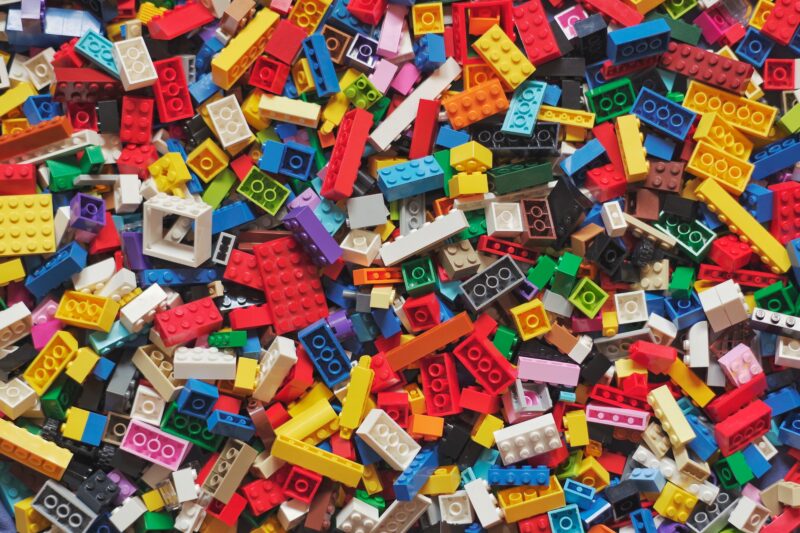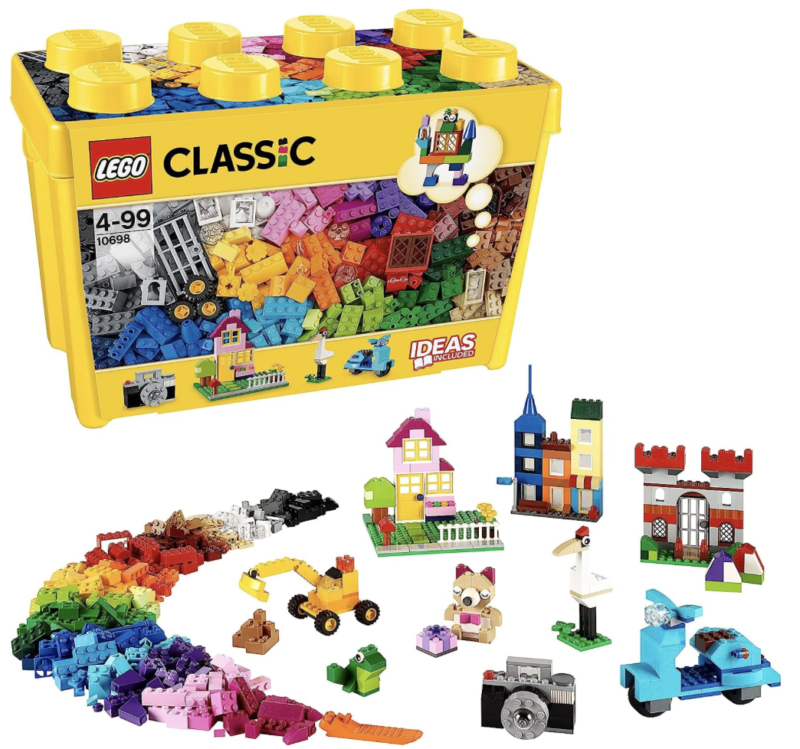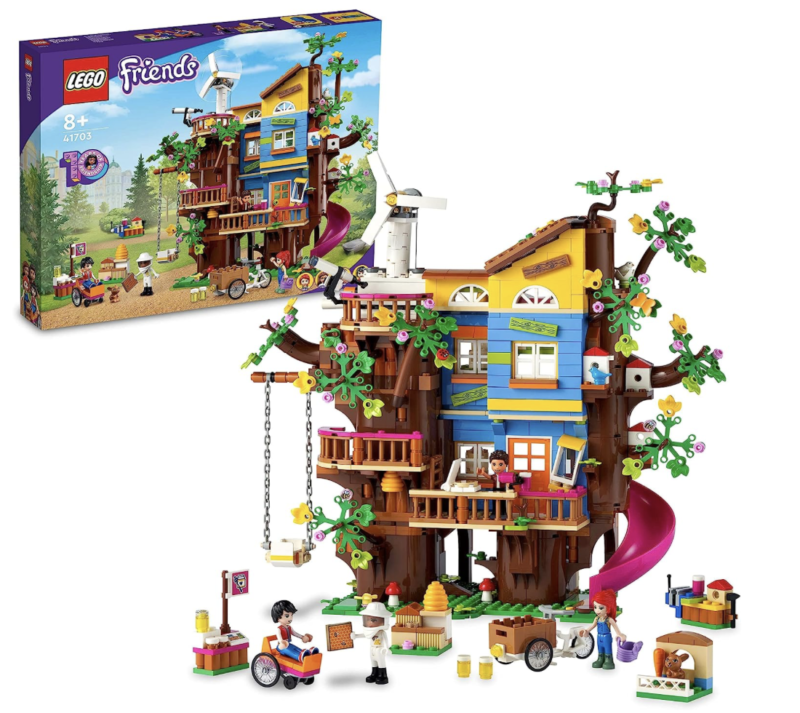When most people think of LEGO, they envision colorful plastic bricks used for building toys and creative play. From ages three to 99, LEGO bricks and pieces are a favorite for creative play. However, LEGO has proven to be far more versatile than that. Beyond its role as a beloved toy, LEGO has found applications in fields of mental health. And because LEGO knows how versatile their bricks and pieces (and sets) are, they can be washed!
As a kid, I only had a few LEGO bricks (yep, still have them), but whenever I babysat as a teen I’d love when I could play LEGO with the kids. It’s so fun to let our imaginations create. Now, as a parent, I may buy more LEGO sets than we strictly need, but we love sitting together (or apart) and building (and rebuilding).
This post covers a lot of LEGO love, including how to clean LEGO bricks and why LEGO is useful for stress management, play therapy, and language learning. I’ll go over each of these and within each section I’ll link to peer-reviewed articles/papers on the topic because that is where the real detail lies.

When I got my Amazon Prime Day LEGO email last night, I had to move this scheduled December post up to today and add in links to some LEGO sets I admire related to the topic. LEGO Amazon.co.uk links are affiliate links and I earn about €5/year from it because I’m horrible at the hard sell.

Cleaning LEGO Bricks & Pieces
I’m sure you’ve figured this out already, but LEGO bricks and pieces can be cleaned. LEGO recommends “that you clean your LEGO® parts by hand using water no hotter than 104°F / 40°C and a soft cloth or sponge”. My mother used to put them all in a net laundry bag and fill the sink with room temperature (lukewarm) water and a few drops of liquid dish soap (washing up liquid as it’s known in Ireland). Easy to agitate and you don’t worry about one going down the drain. Then she’d hang it to drip the excess water for a bit, shaking the bag occasionally to shift the pieces. Once the bag stopped dripping, she’d spread them out on a towel or blanket in the sun or well-ventilated area to air dry.
You know I love a good cleaning hack, so here are links to my other cleaning posts:
- How to keep the house clean with kids
- How to Clean Your Stroller/Buggy
- How I Clean White Converse Sneakers
- A Stylist Approach to Cleaning Out Closets

Adult Stress Management
Stress is a common part of adult life, and finding effective stress management techniques is crucial for mental well-being. LEGO offers a surprisingly effective way for adults to unwind and reduce stress. Knowing this helps make sense of the huge leap of increased Kidult toy sales over the last few years. The benefits are still emerging, but a few are:
- Mindfulness and Focus: Building with LEGO requires concentration and focus. Engaging in this creative process can help individuals shift their attention away from stressors and into the present moment.
- Relaxation and Creativity: The act of assembling LEGO bricks can be soothing and meditative, promoting relaxation and reducing stress levels. It allows adults to tap into their creativity and escape the demands of everyday life.
- Sense of Accomplishment: Completing a LEGO project, whether it’s a small set or a complex masterpiece, can provide a sense of achievement and satisfaction, boosting self-esteem and reducing stress.
Great LEGO sets for adult stress management:
- LEGO 10281 Icons Bonsai Tree Set (shown above)
- LEGO 75257 Star Wars Millennium Falcon
- LEGO 10274 Icons Ghostbusters ECTO-1 Car Kit
- LEGO 76262 Marvel Captain America’s Shield Set
- LEGO 42151 Technic Bugatti Bolide Racing Car
- LEGO 10311 Icons Orchid Artificial Plant
- LEGO 75301 Star Wars Luke Skywalker’s X-Wing Fighter
- LEGO 43217 Disney and Pixar ‘Up’ House
- LEGO 10313 Icons Wildflower Bouquet Set
- LEGO 10309 Icons Succulents Artificial Plants Set
- LEGO 42127 Technic THE BATMAN – BATMOBILE
- LEGO 42159 Technic Yamaha MT-10 SP Motorbike Model Building Kit
- LEGO 10298 Icons Vespa 125 Scooter
- LEGO 42154 Technic 2022 Ford GT Car Model Kit
- LEGO 10315 Icons Tranquil Garden, Botanical Zen Garden Kit
- LEGO 75364 Star Wars New Republic E-Wing vs. Shin Hati’s Starfighter
- LEGO 71411 Super Mario The Mighty Bowser, 3D Model Building Kit
Related Journal Articles:
- LEGO products have become more complex by Christoph Bartneck and Elena Moltchanova
- Why More Companies Are Putting Lego Bricks in the Office by Daryl Austin
- A Preliminary Study of the Empowerment Effects of Strength-Based LEGO® SERIOUS PLAY® on Two Taiwanese Adult Survivors by Earlier Domestic Violence by Paylling Harn. International Journal of Management and Applied Research, 2018, Vol. 5, No. 4. DOI: 10.18646/2056.54.18-012
- Toying with Legos to solve a nanoengineering problem at Johns Hopkins University
- Inertia and scaling in deterministic lateral displacement

Play Therapy
Play therapy is a therapeutic approach that uses play to help individuals, particularly children, express their emotions and navigate difficult experiences. LEGO, with its endless creative possibilities, is an ideal medium for this purpose. Here’s how LEGO can benefit play therapy:
- Non-Verbal Expression: Children may find it challenging to articulate their feelings and experiences with words alone. LEGO allows them to create physical representations of their emotions, providing a non-verbal outlet for self-expression.
- Problem-Solving Skills: Building with LEGO encourages problem-solving and critical thinking. Children can work through complex emotions and situations by constructing and deconstructing their creations.
- Social Interaction: Play therapy often involves interactions with a therapist or peers. LEGO can facilitate social engagement and cooperation, as children collaborate on building projects and discuss their creations.
Great LEGO sets for play therapy:
- LEGO 10698 Classic Large Creative Brick Storage Box Set (shown above)
- LEGO 10788 Gabby’s Dollhouse Toy Playset, 4-Floor & 8-Room Dollhouse
- LEGO 60337 City Express Passenger Train Set, Remote Controlled
- LEGO 10975 DUPLO Wild Animals of the World Toy with 22 Animal Figures
- LEGO 71787 NINJAGO Creative Ninja Brick Box Set with Toy Storage
- LEGO 41703 Friends Friendship Tree House Set
- LEGO 10994 DUPLO Town 3in1 Family House
- LEGO 10993 DUPLO 3in1 Tree House, Construction Toy
- LEGO 41748 Friends Heartlake City Community Centre Modular Building Set
- LEGO 31136 Creator 3 in 1 Exotic Parrot to Frog to Fish
Related Journal Articles:
- Use of LEGO as a therapeutic medium for improving social competence by LeGoff, Daniel B. Journal of Autism and Developmental Disorders, PMID: 15628609, DOI: 10.1007/s10803-004-2550-0 (October 2004)
- LEGO®-based play therapy for autistic spectrum children by LeGoff, Daniel B. Krauss, G. W. Levin, Sarah Allen. School-based play therapy (pp. 221–235)
- Lego Therapy: How Play Can Heal People (+ Resources) by Celestine, Nicole
- The implementation of Lego®-Based Therapy in two English mainstream primary schools by Vanessa Evans and Caroline Bond
- The effectiveness of the Lego® therapy intervention in promoting the social interaction of children with Autism Spectrum Condition in the playground: An evaluation study by Yuk Fai Sam Cheng
- When psychologists become builders by Jon Sutton
- A mixed methods evaluation of the acceptability of therapy using LEGO® bricks (LEGO® based therapy) in mainstream primary and secondary education by Amy Barr, Elizabeth Coates, Ellen Kingsley, Gina Gomez de la Cuesta, Katie Biggs, Ann Le Couteur, and Barry Wright.
- Exploring positive psychology with LEGO® SERIOUS PLAY® by Mads Bab & Ilona Boniwell
- Building with purpose: Using LEGO SERIOUS PLAY in play therapy supervision by Mary Anne Peabody
- How effective is the ‘Lego® Therapy’ intervention to support children aged 5-16 with an autistic spectrum disorder with their social communication difficulties in school? by Jeetan Songara

Language Learning
Language learning can be a challenging process, especially for individuals learning a new language as adults. LEGO offers a unique approach to language acquisition by making learning engaging and interactive:
- Visual Learning: LEGO models serve as visual aids that help learners associate objects with words. This visual connection can enhance vocabulary retention.
- Hands-On Engagement: Hands-on activities, like building with LEGO, can boost memory retention and comprehension, making it easier to learn and remember new words and phrases.
- Contextual Learning: Creating scenes or scenarios with LEGO can provide context for language learning, helping learners understand how words are used in real-life situations.
Great LEGO sets for language learning:
- LEGO 41703 Friends Friendship Tree House Set (shown above)
- LEGO 10994 DUPLO Town 3in1 Family House
- LEGO 10993 DUPLO 3in1 Tree House, Construction Toy
- LEGO 60335 City Train Station Set with Toy Bus
- LEGO 10788 Gabby’s Dollhouse Toy Playset, 4-Floor & 8-Room Dollhouse
- LEGO 60337 City Express Passenger Train Set, Remote Controlled
- LEGO 41748 Friends Heartlake City Community Centre Modular Building Set
- LEGO 10975 DUPLO Wild Animals of the World Toy with 22 Animal Figures
- LEGO 10698 Classic Large Creative Brick Storage Box Set
Related Journal Articles:
- Developing Young Learners’ Oral Skills Through Storytelling with LEGO® by Cojocnean, Diana. Revista de Pedagogie – Journal of Pedagogy LXVII(1):105-121, DOI:10.26755/RevPed/2019.1/105 (July 2019)
- Lego in teaching a foreign language by Ioannes Oculus (2020)
- FIRST® LEGO® League Discover Supporting STEAM Concepts and the Language of STEAM in Early Education by Magennis, Marguerita (March 2022)
LEGO has transcended its role as a child’s toy and has become a versatile tool in various therapeutic and educational contexts. Whether used as a stress management tool for adults, in play therapy to help children express their emotions, in language learning to enhance vocabulary acquisition, LEGO offers a unique and effective way to connect, learn, and relax. So, the next time you see those colorful bricks, remember that they hold the power to build bridges between individuals, languages, and stress-free moments.
